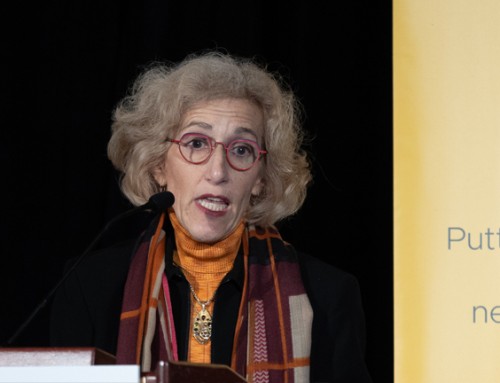 A decade ago, Chief Scientific Officer of Kids Brain Health Network (KBHN) Dr. James Reynolds remembers considering how groundbreaking it would be to have a Canadian Fetal Alcohol Spectrum Disorder (FASD) database – one that could capture the many unanswered questions surrounding the disability.
A decade ago, Chief Scientific Officer of Kids Brain Health Network (KBHN) Dr. James Reynolds remembers considering how groundbreaking it would be to have a Canadian Fetal Alcohol Spectrum Disorder (FASD) database – one that could capture the many unanswered questions surrounding the disability.
Dr. Sterling Clarren—former Scientific Director of the Canada Fetal Alcohol Spectrum Disorder Research Network (CanFASD)— initially came up with the idea and consulted with Dr. Reynolds and fellow researcher Dr. Jocelynn Cook.
By 2010 Dr.’s Clarren and Cook had managed to secure some funding to start the project. In 2015 Kids Brain Health Network began funding the project as part of a larger FASD research program, and the database took off. Today, the National FASD Database has over 2,000 entries from 28 FASD diagnostic clinics spanning seven provinces and territories.
The project is now being led by Dr. Cook and CanFASD, and continues to be supported by KBHN and funded by the Public Health Agency of Canada and CanFASD. It’s the only comprehensive FASD database in the world and has received international attention, with other countries including Australia and New Zealand looking to Canada as they work towards creating a similar database of their own.
“The idea was to have a national database that would actually allow us to describe FASD in a quantitative way that nobody could argue with,” explains Dr. Reynolds “People would say, ‘well, we don’t really know what challenges these kids have, and we don’t really know what their comorbidities are.’ Well, now we know, with evidence from a very substantial sampling.”
FASD is a brain-based disability as a result of prenatal exposure to alcohol and is estimated to affect at least three per cent of the Canadian population. The process of receiving a diagnosis requires an assessment from a multidisciplinary team, who follow Canada’s current diagnostic guidelines for FASD which requires assessing 10 different brain domains—including those responsible for memory, hyperactivity, and motor skills. In order to receive a diagnosis, three domains must be deemed significantly impaired.
Collecting information for the database requires participating clinics who have completed these diagnostic assessments to fill out a data form which collects a wide range of information, including whether or not the individual received an FASD diagnosis, their history of prenatal alcohol exposure, and any other diagnoses.
The idea is to get a better picture of the FASD population in Canada in order to identify their distinct needs, while simultaneously ensuring best practices when it comes to diagnostic assessments. The team has started to analyze the data and are already seeing informative trends.
“We’re seeing a trend of polysubstance exposure—very rarely are individuals with FASD just [prenatally] exposed to alcohol,” explains Kathy Unsworth, database project manager. “We knew that intuitively but now we have the data to demonstrate it, which is really important for prevention conversations. We shouldn’t just be talking about alcohol when we talk about prevention, we should be talking about things like nicotine and cannabis as well.”
The database has also revealed that upwards of 90 per cent of people captured have mental health issues, which Unsworth says could be a strong piece of evidence to encourage mental health facilities to start screening for FASD.
Another goal of the project has been using it as a tool to compare individuals with FASD to those with other neurodevelopmental disabilities, primarily autism and cerebral palsy. Traditionally, services are available based on diagnosis. Being able to demonstrate that individuals with different brain-based disabilities have similar challenges and would benefit from the same types of interventions could make services more accessible.
“If you know putting money into a particular type of service is actually going to serve the needs of a broad spectrum of children with neurodevelopmental disabilities, you actually get to leverage your money and know that it’s going to have an impact on a greater number of children without having to think about individualizing services based on diagnosis,” says Dr. Reynolds.
Having concrete information on what Canada’s FASD population looks like has the potential to be a powerful way of influencing policies. Unsworth spends a lot of time explaining the information captured in the database to policy makers as a way of encouraging them to allocate more funds to FASD, and to acknowledge that “this is a major public health issue that’s being ignored.”
So far, the database has revealed that 66 per cent of individuals who went to diagnostic clinics for an assessment came out with an FASD diagnosis, 23 per cent did not, and 11 per cent were deemed “at risk”—a designation for people who don’t quite meet the criteria for a diagnosis but have been prenatally exposed to alcohol and show signs of developmental delays.
While the database is a clear example of research in action, Reynolds and Unsworth say it can have direct impacts for families and individuals living with the disability as well. Part of the information collected by the database includes which interventions and services clinics are referring patients to.
CanFASD sends reports back to the clinics based on this information, to ensure patients are being referred to services that actually exist in their area and that are best suited to meet their needs. It could also help to identify gaps in services. Perhaps one clinic is constantly referring children to a speech language pathologist—this could make a case that schools in that area should have a pathologist available.
The database is also meant to help parents and families know they’re not alone and give them a deeper understanding of how FASD is impairing the brain. The data shows that most individuals who receive a diagnosis have significant impairment in five or more brain domains—that’s at least two more than is needed to receive a diagnosis.
“These kids are trying to function in school and their community with very significant impairments and abilities that we all take for granted,” says Dr. Reynolds. “Emotional regulation, ability to adapt to your environment, memory—these are all things that you need to function in life, and most of these kids are impaired in most of them. That has significant impacts from a family perspective and as a society to understand the challenges these kids and their families face on a daily basis.”
As the project continues, the next steps will be getting more clinics to participate and continuing to analyze the data to get a better understanding of Canada’s FASD population. Another goal will be trying to find ways to get information from people with the disability who might be harder to reach—mainly people who aren’t necessarily well-supported enough to access a diagnostic clinic.
Dr. Reynolds says the ultimate sign of success will be when the database is used to influence policy and promote concrete changes in FASD research and understanding.
“Everyone is interested in getting the database to a phase where along with being a source of knowledge, it becomes an influencer—something that actually helps drive direction,” he says.
“This could mean using it to create new research questions or using it to give recommendations that governments can use in setting priorities for individuals with FASD. It could also mean [using the database to] inform best practices at a clinical level and help us understand resource allocation and uptake by families. That’s really the next phase of this project.”
Written by Vanessa Hrvatin







